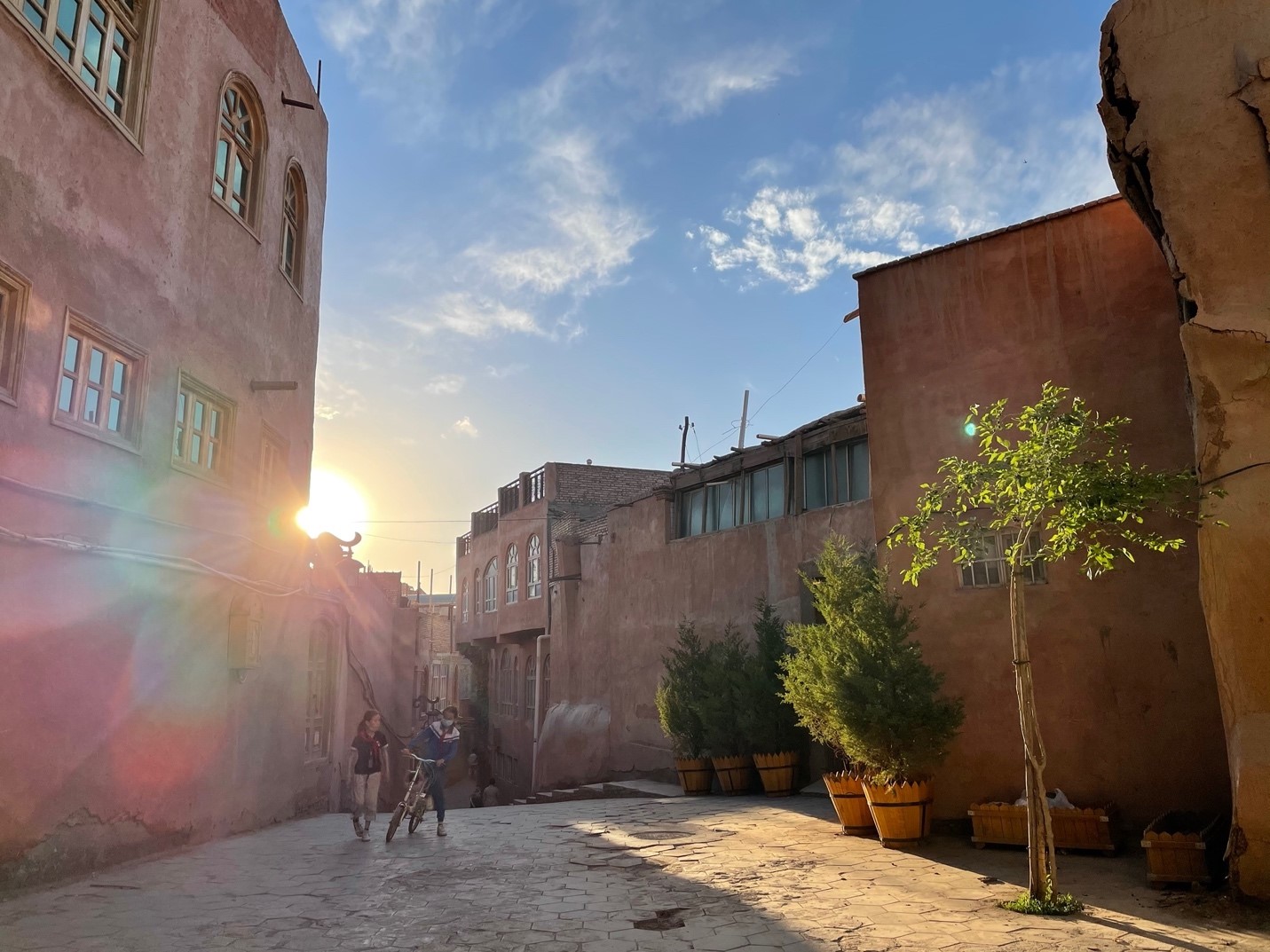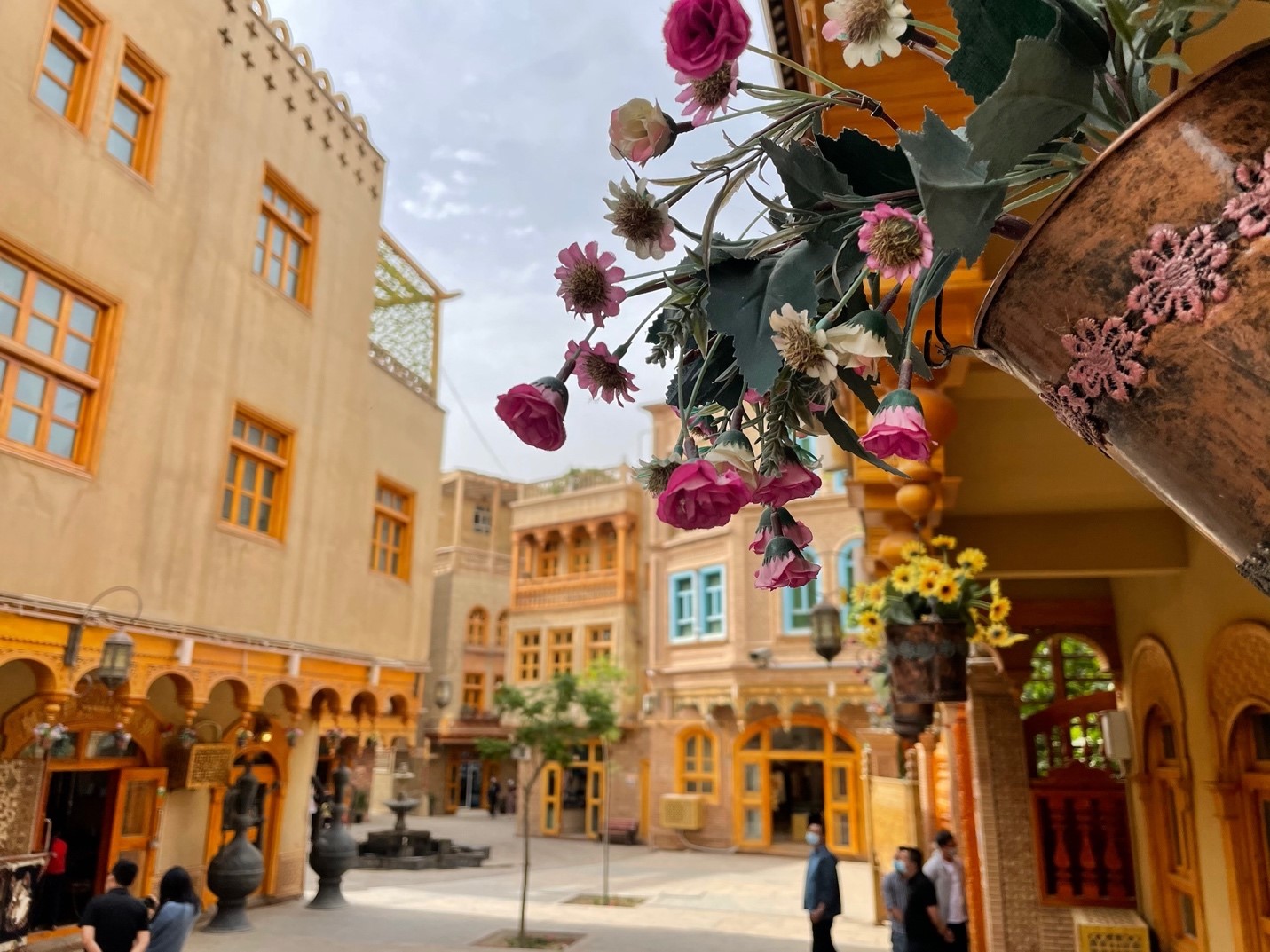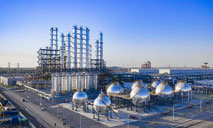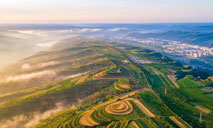Reaching towards new developmental heights in a modernizing Xinjiang
In China’s far west and in the southwestern sub-region of the Xinjiang Uyghur Autonomous Region, rising above the urban skyline and in view of its old city, stands Kashgar’s new TV tower, a space-grey metallic structure whose futuristic features form a stark contrast with the densely packed network of bare earthen mud-brick buildings and labyrinthine alleyways perched atop the ancient hillside below.

A newly built TV tower rises high above the urban skyline in view of Kashgar City’s historic old quarter, northwest China’s Xinjiang Uyghur Autonomous Region. (People’s Daily Online/ Ma Tianyi)
Encapsulated by a rapidly expanding urban space, Kashgar today is a microcosm of both a traditional and modernizing Xinjiang as well as a central hub for driving continued socio-economic development throughout the broader region along a key corridor of the Belt and Road Initiative. When taken together, all of the transformative changes afoot at the doorsteps of adobe dwellings serve as a testament to the frenetic tempo of our times and the lived experience of rapid modernization.
Another day dawns on the façades of mud-brick buildings in China’s northwest
Situated at the heart of a key trading post along the ancient Silk Road, Kashgar’s old city has a history of more than 2,000 years, a “living fossil” characterized by its mud-brick buildings and its intersecting paths and winding streets, with many of the remaining age-old residential courtyards having a history of well over 100 years.
In July 2015, the Old City of Kashgar was officially granted the status of a national 5A tourist attraction, the ninth such attraction in Xinjiang and the highest-level ranking adopted by China’s Ministry of Culture and Tourism. Six years earlier, starting in 2009, the municipal government undertook a major initiative to transform, preserve and reconstruct the historic district anew, with the “Kashgar Old City Comprehensive Protection and Management Project” having been completed in 2017 after a combined investment of over 7,049 million yuan (1,088 million USD) from central, regional and local governments, along with participating enterprises and local residents.
The redevelopment project encompassed 49,083 households living in 28 districts, 5.07 million square meters of housing classified as substandard and nearly 36 kilometers of collapse-prone tunnels. Upon completion, a number of local residents had been relocated and resettled to one of the 4,622 new houses built at a combined floorspace of 240.3 thousand square meters in the 27 peripheral districts outlying the “core” old city district, which houses a total of 36,793 households at a combined space of 4.31 million square meters.
Other than consolidating the overall built environment, significant upgrades to infrastructure were made to ensure widespread access to basic public services, including running water, sewage, heating, electricity, gas, sanitation and garbage disposal.
In the remodeled multi-storied houses lining one of the many widened streets in the old city, residents run their own businesses on the first floor or rent the shop space out to other entrepreneurs, taking up residence on the second or third floors of the buildings. Local residents operating businesses in the area have benefited from a thriving tourism sector, an industry that has boosted incomes while providing a variety of new employment opportunities.

Another day dawns on the mud-brick façades of traditional low-rise dwellings as schoolchildren frolic about along the winding corridors of the renovated historic old quarter of Kashgar City, Kashgar Prefecture, northwest China’s Xinjiang Uyghur Autonomous Region. (People’s Daily Online/Luke Witzaney)
Sipping tea cross-legged on a threadbare rug at the “Hundred-Year-Old” Ostangboyi Teahouse reconstructed in 2013 while being serenaded by a group of ‘doppa’ cap donning men plucking away at ‘rawaps’ in a traditional folk ditty, an unwitting tourist may be forgiven for reckoning that this part of the old city had somehow been trapped in the amber of time down to this day.
Wandering through alleyways alongside historic residential courtyards enclosed within the center of a sprawling and densely populated cityscape, the fabric of urban society stretches and pulls from the ancient ‘hutongs’ and ‘siheyuan’ of surviving pre-modern communal abodes in old Beijing right across the continental landmass to the adobe façades of traditional low-rise dwellings that still occupy southwestern Xinjiang’s centuries-old urban neighborhoods.
Historic districts retrofitted and revitalized for many generations to come
At the center of Hotan City in Hotan Prefecture, a major oasis town situated in southwestern Xinjiang east of Kashgar Prefecture, lies its old city of Tuancheng, a revitalized living quarter with picturesque walkways lined with ornate buildings in the local Uyghur vernacular-style of architecture. Like Kashgar’s historic district, the traditional residential block in Hotan has since undergone a major transformation with the renovation, reconstruction and earthquake-proofing of its distinctive mud-brick courtyards and low-rise dwellings.

Along picturesque walkways greeting passers-by with rows of gardens and lines of potted flowers, multi-story buildings renovated and reconstructed in the local vernacular “Aida Wong Sailai” architectural style are embellished with ornate wooden window frames, paneling, and pillars in Tuancheng, a famous old town in Hotan City, Hotan Prefecture, northwest China’s Xinjiang Uyghur Autonomous Region. (People’s Daily Online/Luke Witzaney)
According to reporting from China Daily, the model adopted for the renovation project was based on the principles of “overall protection, underlying continuity, functional regeneration and broad-based participation,” along with an approach combining “one plan for one street and one design for one household,” which aimed to preserve the unique character, vitality and diversity of the initial architectural layout while ensuring that the individual residents inhabiting the living quarters were given a direct say over the final design for their newly upgraded homes.
Each resident was provided with a 580-yuan (around 90 USD) subsidy per square meter of floorspace in their original homes from the local government to support the voluntary construction work of individual or multiple households. Upgraded urban road and transportation networks within and around Tuancheng, along with the installation of basic public infrastructure, such as water, electricity and gas, accompanied the overall renovation plans for the district, improving access to municipal services for local residents.
The urban renewal plan first got off the ground in 2016 with a financial outlay of 153 million yuan (23.6 million USD) supporting the local government in its effort to rebuild, renovate, reinforce and preserve the buildings and alleyways occupying 83 hectares of Hotan’s central urban district. Some 1,091 households have been direct beneficiaries of this endeavor in modern urban planning combined with heritage restoration and preservation.
Tuancheng has already been recognized as a national 4A tourist attraction, with reports suggesting that the local authorities have submitted an application just this year for upgrading to a 5A status, the regionally distinct ‘Ayiwang’ (also known as ‘Aida Wong Sailai’) ethnic architectural style of the buildings in the living quarter having already been entered into the country’s national list of intangible cultural heritage.
In the many multi-story buildings next to the meandering streets and lanes, occupants have taken advantage of the additional floorspace in their newly renovated homes to set up family inns, restaurants and shops, engaging in a variety of small-scale commercial enterprises showcasing traditional ethnic handicrafts and local specialties.
Combined with improvements to overall living conditions, and the reinforcement of a flourishing local tourism industry, the longstanding inhabitants in and around Tuancheng have also benefited from new opportunities for gainful employment, realizing a more diversified means to grow their incomes and improve their standard of living.

A local merchant showcases her Atlas silk fabrics in her brand-new shop situated along one of the popular pedestrian walkways in Tuancheng, a famous old district in Hotan City, Hotan Prefecture, northwest China’s Xinjiang Uyghur Autonomous Region. (People’s Daily Online/Kou Jie)
Tunsahan Abdugheni, a local Uyghur resident whose family of tailors have lived in Tuancheng for many generations, opened her own Atlas silk shop in 2016 and moved the shop next to her newly renovated three-story home in 2018, which houses herself and 12 other family members, including her mother, three brothers and their wives and children.
“The original houses were all dried mud-brick buildings and surrounded by dirt roads, which would be full of muddy water when it rained. After the renovations, the surroundings have improved and the traditional Uyghur style of the buildings has become even more distinctive than before.”
Before the renovation, her house had only one floor and lacked the space needed to comfortably accommodate all of her family members let alone the shop space needed to operate her own family business. Now, just steps away from her new home, the silk shop has provided her with a more convenient means to improve her livelihood, bringing in as much as 3,500-4,000 yuan (540-617 USD) a month, roughly twice what she made working as a tailor.
When asked whether the cultural heritage representative of the original mud-brick buildings or the social bonds between neighbors in her community have been lost as a result of the modern renovations and increased commercialization of the district, Abdugheni pointed to the interior design of her flat that she herself picked out, which was fully furbished in a traditional Uyghur style.
“The mud-brick houses we lived in before were not done up in our style. Before we had little funds and so there was nothing we could do about the poor living conditions. Our new homes are even more distinguished now with their traditional decorative designs, so I think they’re very pleasing to the eye,” she replied.
“The mutual customs and traditions we Uyghur share have not been eroded with the renovation of Tuancheng. For example, when a family in our community makes food, they’ll call on neighbors to come over for a bite. These strong communal bonds are a part of our culture and will persist now just as before.”
Photos
Related Stories
- Xinjiang agricultural products reach more markets through pairing assistance
- Chinese netizens criticize Kodak for posting photos of Xinjiang while describing the place as under 'acute repression'
- Xinjiang sets great store by preservation of cultural treasures
- Interview: China's white paper on Xinjiang important for knowing real Xinjiang - Jordanian expert
- Foreign officials, experts hail Xinjiang's progress in human rights
Copyright © 2021 People's Daily Online. All Rights Reserved.










